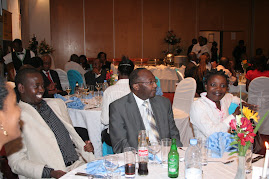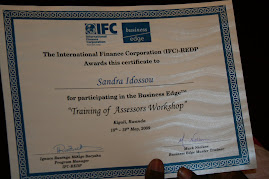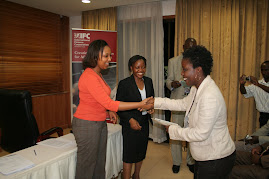
CUSTOMER CARE: Common courtesy in service
BY SANDRA IDOSSOU
This is part of an email I received from Anita, a dear reader of The New Times.
“Dear Sandra, please write about this issue we all face on courtesy. It just seems as if many service providers don’t know what it entails. I went to this company and as I was dealing with the staff, someone came in and this guy just forgot that I was sitting right in front of him. He chatted and laughed for a long time while I was sitting there waiting for him to finish. And to make matters worse, when he finished, he didn’t even apologize. I have the impression many people are brought up never being taught how to be courteous especially while dealing with customers.”
Well, just like Anita, we all have one way or the other suffered from the lack of courtesy from service providers. Today, good manners, common courtesy and polite attitudes have declined in most of our societies.
Courtesy is defined as using accepted and appropriate manners and behaviors. It is generally a component within the customer service strategy of any organization and is therefore very needed in all human encounters but here, I would like to talk about the three sides of courtesy.

1. Courtesy to your staff as an owner or director
In all its forms and styles, courtesy behaviors should be hailed by everyone from the CEO of an organization down to the cleaner.
Common courtesy makes you the General Manager greet your staff in the morning or thank them for bringing your tea or water to your office. Courtesy is simply a sign of respect and civility towards people we deal with.
Erastus Wiman says that “Nothing is ever lost by courtesy. It is the cheapest of the pleasures costs nothing and conveys much. It pleases him who gives and him who receives, and thus, like mercy, it is twice blessed”
2. Courtesy from the customers to the service staff
The next time you find a queue, please learn to respect it. Do not jump on others or disrespect the other customers waiting to be served.
Do treat the service staffs with respect and talk politely to them. Do not undervalue them. Learn to say please and thank you to them. Note that people who behave courteously are known as ladies and gentlemen.

Once in a while, we often have something like an appraisal meeting with our home staffs. The last time we had this at the end of the year, we seized the opportunity to thank the cook and show him our appreciation.
Our cook was just shocked with this and he told us, he was just doing his job and never expected us to thank him. But for us, that is courtesy and consideration.
3. Courtesy from the service staff to the customer
Courtesy behaviors are those small gestures that define how thoughtfully you treat your customers on a daily basis.
It is expressed as a wide range of respectful behaviors and positive attitudes such as arriving early at work, using a friendly smile (even over the phone), using Ms, Mr and people’s last names, maintaining a neat appearance and using proper, moderate language, stopping whatever you are doing when talking to customers and showing listening skills (attentiveness) and being courteous in all interactions regardless of circumstances.

It also includes treating all your customers with respect irrespective of their social statute, class, origin, color, height, dress standards.
Avoiding chewing gum or picking on your teethes of nose in front of your customers, keeping your promises, apologizing to the customer in front of you when you have to pick up the phone, using frequently words like please, excuse me, thank you, I’m sorry and yawning, coughing and sneezing by covering your mouth and using a tissue, handkerchief or hand.
Common courtesy counts because it conveys caring in little ways and causes the giver to act thoughtfully and the receiver to feel treated with consideration. This will definitely impact on your customer’s loyalty.
The author is a customer service expert currently working in Rwanda.





























Aucun commentaire:
Enregistrer un commentaire